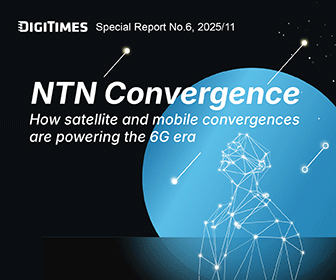At the 2024 World Robot Conference held in late August in Beijing, Chinese companies showcased numerous humanoid robots, reflecting their enthusiasm for futuristic robotics. In contrast, Taiwanese companies at the year's Taiwan Automation Intelligence and Robot Show (TAIROS) in Taipei took a more pragmatic approach, focusing on practical advancements such as modular, intelligent, and collaborative robots.
Humanoid robots, with an estimated price tag of around US$300,000, remain expensive and immature. Taiwanese robot manufacturers, who operate at smaller scales and without the substantial government subsidies seen in China, are not in a position to burn cash on such high-risk markets. Instead, they're looking for blue ocean or niche market opportunities in more established sectors, aligning with their resources and expertise.
Modular robots: The growing customization demand
Rising demand for customization is driving the modular robot market, particularly in industries outside traditional manufacturing, such as food and healthcare. Taiwanese automation leader MiRLE Group, for example, has launched the smallest six-axis robot used in the semiconductor sector, leveraging its in-house production of key components like harmonic drive reducers through its subsidiary Main Drive Corp. This gives MiRLE flexibility in customizing robots to handle specific weights and applications, especially in the growing semiconductor industry.
Chuck Chen, general manager of Main Drive, forecasts increasing demand for harmonic drive reducers as robot designs become more complex and diverse. Main Drive is also eyeing the US market, where customization needs are high, as a key growth area.
AI-powered robots: The rise of intelligent automation
With Nvidia CEO Jensen Huang predicting that the next wave of AI will focus on physical applications, AI-powered robots are becoming a key area of development. Rather than competing with global giants in hardware, Taiwanese companies are honing robots' brainpower and sensory abilities.
Solomon Technology, a key partner of Nvidia in AI robotics, has focused on simplifying AI vision applications. At TAIROS, Solomon introduced its intelligent motion planning software, which uses generative AI to calculate optimal robot movements in real time, accelerating computation speeds by over 70 times compared to traditional methods.
Cobots: The transition toward humanoid robotics
While companies like Tesla and China's Unitree Robotics are pushing humanoid robots into the spotlight, traditional robotics players remain cautious. Fanuc, for example, has opted to focus on collaborative robots (cobots) rather than humanoid robots, citing the technical and safety challenges of humanoid designs.
Cobots, which allow safe human-robot collaboration, are seen as a more practical transitional product. The cobot market is expected to grow at over 20% CAGR, with Taiwanese firms like Techman Robot leading the charge. Techman has integrated AI vision into its cobots, offering flexibility and price competitiveness, successfully securing major deals in China and Europe.
As automation becomes essential in industries facing labor shortages, functional safety in cobots will be a key area of focus. Taiwan's Touché Solutions, with its advanced tactile sensors, has made significant strides, entering Japan's competitive robotics market with long-term partnerships with industry giants like Kawasaki and Mitsubishi Electric.




